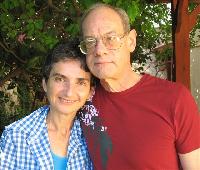Preparing a TM of potential translations Téma indítója: Brent Sørensen
|
|---|
Brent Sørensen 
Németország
Local time: 10:28
Tag (2016 óta)
német - angol
+ ...
Every once and a while, I have a slow day or two where I don't have much translation work. I try and use this time to do think of new ways to improve my translation efficiency.
I thought it could be a good idea to translate some "potential" sentences and add them to a TM to save time later on. I'm just not quite sure how to go about this. Is there any way to acquire a list of commonly used sentences and phrases for a particular language?
| | | | Samuel Murray 
Hollandia
Local time: 10:28
Tag (2006 óta)
angol - afrikaans
+ ...
| Rather create glossaries | Feb 14, 2020 |
Brent Sørensen wrote:
I thought it could be a good idea to translate some "potential" sentences and add them to a TM to save time later on.
Well, if we look at how many segments you use more than once across different jobs, it should be obvious that the odds of such an advance translated sentence appearing as a fuzzy match in any future translation job are very, very low. If you want to spend time doing translation-related work on speculation, I suggest you create glossaries by working your way through reference materials. This will, at least, help you to learn more about the subject fields that you want to work in.
| | | | | What's common? | Feb 14, 2020 |
By purpose, the really "common" translations are already somewhere in your TMs. Or 100% matches.
Adding to Samuel's post, there are dedicated programs that could mine through a pile of your source texts in a given area to extract a list of relevant e.g. one-, two-, three- and four-word phrases that are repeatedly found in your line of work. Not sure it would be worth the trouble though, as these programs often mean you have to sift through a lot of rubbish. And they cost money.
... See more By purpose, the really "common" translations are already somewhere in your TMs. Or 100% matches.
Adding to Samuel's post, there are dedicated programs that could mine through a pile of your source texts in a given area to extract a list of relevant e.g. one-, two-, three- and four-word phrases that are repeatedly found in your line of work. Not sure it would be worth the trouble though, as these programs often mean you have to sift through a lot of rubbish. And they cost money.
Another (and more pleasant) way to improve translation efficiency when you're idle is to go out for walks - or run away from screens -, eat good food, sleep well and exercise!
Philippe ▲ Collapse
| | | | Multiverse Solutions s.r.o. (X)
Local time: 10:28
lengyel - angol
+ ...
| Glossary is more important | Feb 17, 2020 |
The simple way is to rely on automation. You will save loads of time. Chances are, you will populate your TM and GLO files with rubbish. Smart rubbish is disguised as professionally sounding phrases. Stupid rubbish means uncorrected linguistic errors. Ultra rubbish means mismatches.
You can also manually (or mentally) comb through your files, re-translate when possible, and correct all doubtful or makeover translations. And use the 100% perfect, clean translation to generate 'Approv... See more The simple way is to rely on automation. You will save loads of time. Chances are, you will populate your TM and GLO files with rubbish. Smart rubbish is disguised as professionally sounding phrases. Stupid rubbish means uncorrected linguistic errors. Ultra rubbish means mismatches.
You can also manually (or mentally) comb through your files, re-translate when possible, and correct all doubtful or makeover translations. And use the 100% perfect, clean translation to generate 'Approved' TM or glossary. If you go this way, you will learn a lot about the subject matter - for which typically there is no time when processing actual orders.
By the way, it is a common misconception that TM is the golden key to translation. TM is the record of your work, not the source of language re-use. Except when you work with highly repetitive texts from the same authors (provided that they follow strict grammar rules).
Fast 'alignment' appear attractive, generating trillions of TUs in a nanosecond. But how often will you really come across identical segments?
On the other hand, GLOssary is made up of actual building blocks of the language. Nicely developed, verified and approved glossary will save you time, effort, or embarrassment, if you are new to the field of the customer.
As an example: I have a customer (lawyers) who produces literally dozens of legalese pages every day. Due to the intricacies of legal terms, translation is always slow and rarely crosses the 400 wph speed. However, once I decided to extract glossary pairs from old translations for this customer. It took me three full days to come up with a decent glossary. Since then, translations for this customer are routinely finished at about 1600 wph. Including quality checkup and 100% legal terminology matching. ▲ Collapse
| | | | To report site rules violations or get help, contact a site moderator: You can also contact site staff by submitting a support request » Preparing a TM of potential translations | Wordfast Pro | Translation Memory Software for Any Platform
Exclusive discount for ProZ.com users!
Save over 13% when purchasing Wordfast Pro through ProZ.com. Wordfast is the world's #1 provider of platform-independent Translation Memory software. Consistently ranked the most user-friendly and highest value
Buy now! » |
| | Trados Business Manager Lite | Create customer quotes and invoices from within Trados Studio
Trados Business Manager Lite helps to simplify and speed up some of the daily tasks, such as invoicing and reporting, associated with running your freelance translation business.
More info » |
|
| | | | X Sign in to your ProZ.com account... | | | | | |
















